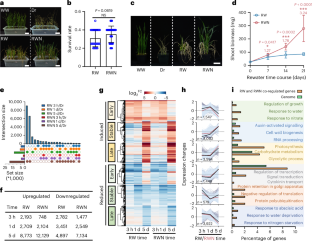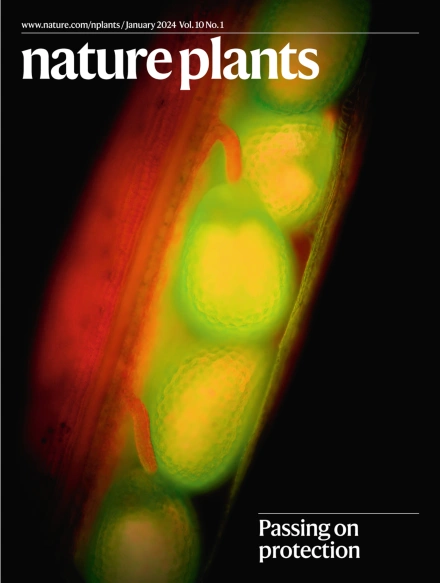Nitrogen enhances post-drought recovery in wheat by modulating TaSnRK2.10-mediated regulation of TaNLP7
IF 13.6
1区 生物学
Q1 PLANT SCIENCES
引用次数: 0
Abstract
Drought stress affects plant growth and agricultural production, especially in the context of global climate change. Post-drought rehydration is crucial for plant recovery and sustained growth, yet the mechanisms underlying this process remain poorly understood. Nitrogen fertilizer plays a role in optimizing plant growth and enhancing stress resistance, but its role in post-drought recovery has not been fully elucidated. Here we demonstrate that nitrogen enhances post-drought recovery in wheat by modulating TaSnRK2.10-mediated regulation of TaNLP7. Transcriptomic analysis revealed that nitrogen supplementation increased the positive effects of rewatering on gene expression. Nitrogen inhibits the activity of TaSnRK2.10, a kinase involved in abscisic acid signalling. TaSnRK2.10 interacts with and phosphorylates TaNLP7-3A, a master regulator of the nitrate signalling pathway, reducing its nuclear localization and stability. This phosphorylation event suppresses genes involved in nitrate response, inhibiting nitrate-induced growth. Analysis of the nitrogen response levels in a wheat natural population revealed that transcriptional levels of the two haplotypes of TaSnRK2.10-4A respond differently to abscisic acid and nitrate, providing insights into the selection of wheat varieties that may be better suited for different environmental conditions to optimize yield. Nitrogen promotes wheat’s recovery after drought stress through the TaSnRK2.10-TaNLP7 module. This breakthrough connects drought-stress signalling with nitrate response pathways, providing a genetic framework for developing climate-resilient crops.


氮通过调节tasnrk2.10介导的TaNLP7调控促进小麦干旱后恢复
干旱胁迫影响植物生长和农业生产,特别是在全球气候变化的背景下。干旱后补液对植物恢复和持续生长至关重要,但这一过程背后的机制尚不清楚。氮肥在优化植物生长和增强抗逆性方面具有重要作用,但其在干旱后恢复中的作用尚未完全阐明。本研究表明,氮通过调节tasnrk2.10介导的TaNLP7的调控,促进了小麦干旱后的恢复。转录组学分析显示,补氮增加了复水对基因表达的积极影响。氮抑制TaSnRK2.10的活性,TaSnRK2.10是一种参与脱落酸信号传导的激酶。TaSnRK2.10与硝酸盐信号通路的主要调控因子TaNLP7-3A相互作用并使其磷酸化,从而降低其核定位和稳定性。这种磷酸化事件抑制了参与硝酸盐反应的基因,抑制了硝酸盐诱导的生长。通过对一个小麦自然群体氮响应水平的分析,发现TaSnRK2.10-4A两种单倍型的转录水平对脱酸和硝酸盐的响应存在差异,这为小麦品种的选择提供了新的思路,从而更好地适应不同的环境条件,优化产量。
本文章由计算机程序翻译,如有差异,请以英文原文为准。
求助全文
约1分钟内获得全文
求助全文
来源期刊

Nature Plants
PLANT SCIENCES-
CiteScore
25.30
自引率
2.20%
发文量
196
期刊介绍:
Nature Plants is an online-only, monthly journal publishing the best research on plants — from their evolution, development, metabolism and environmental interactions to their societal significance.
 求助内容:
求助内容: 应助结果提醒方式:
应助结果提醒方式:


